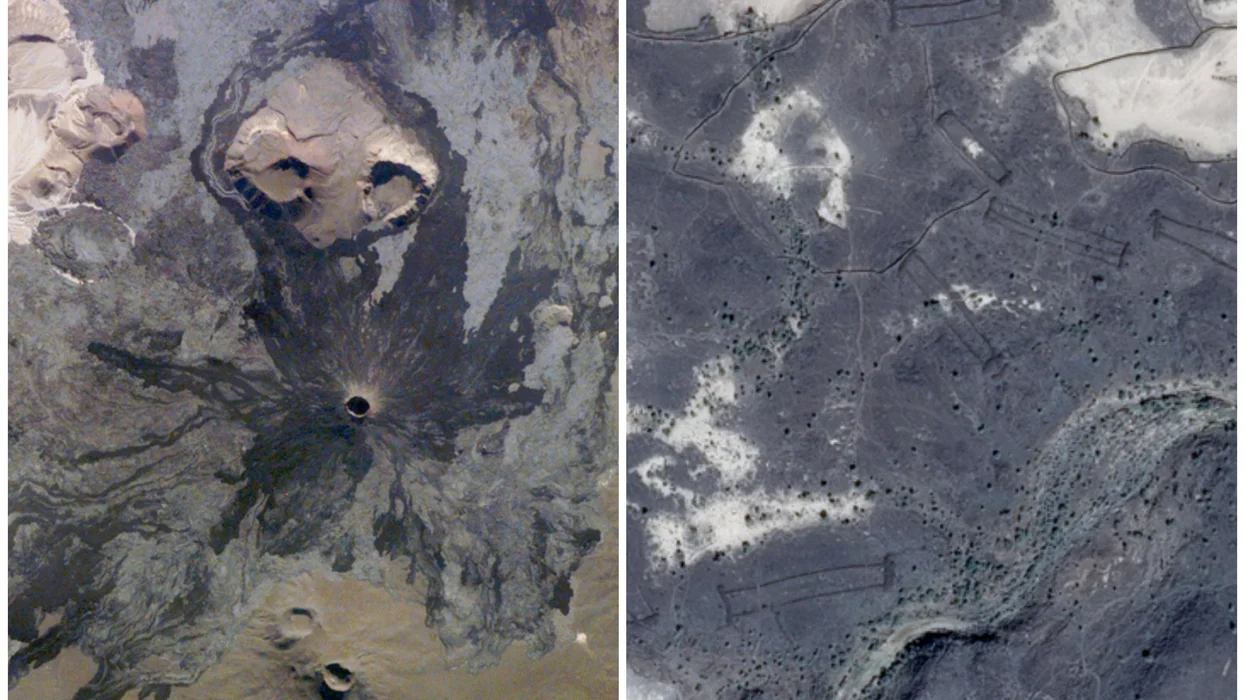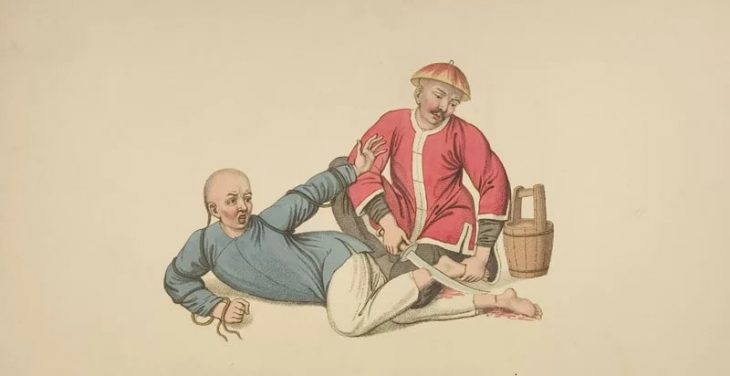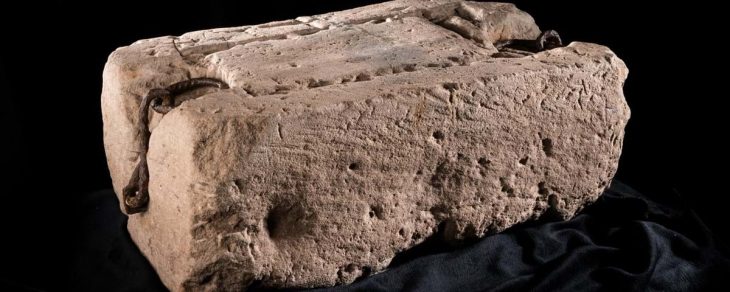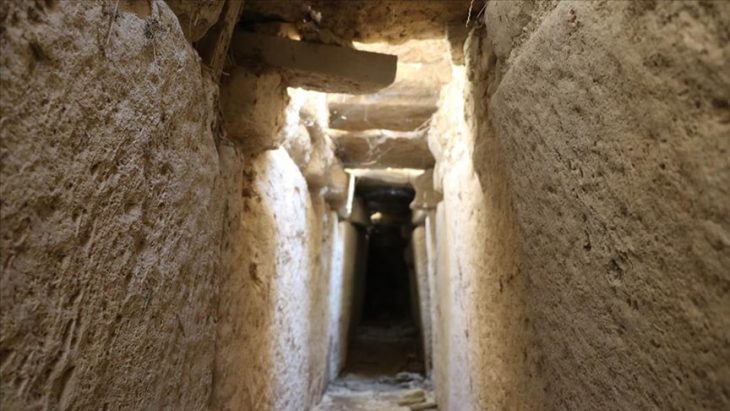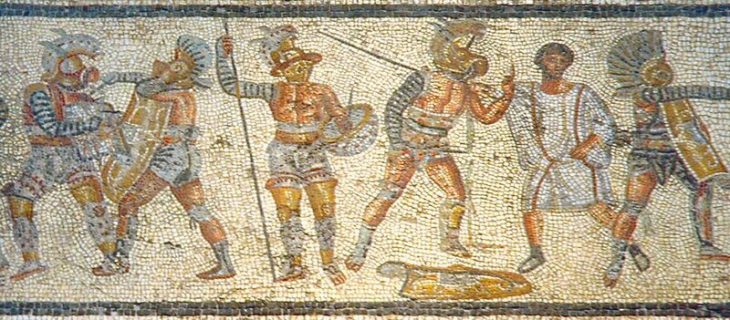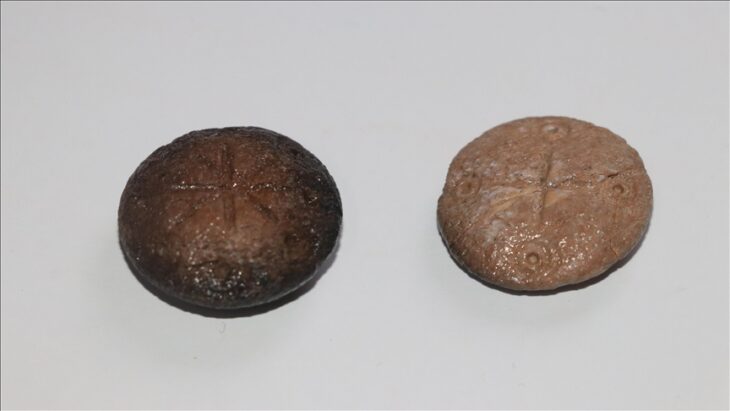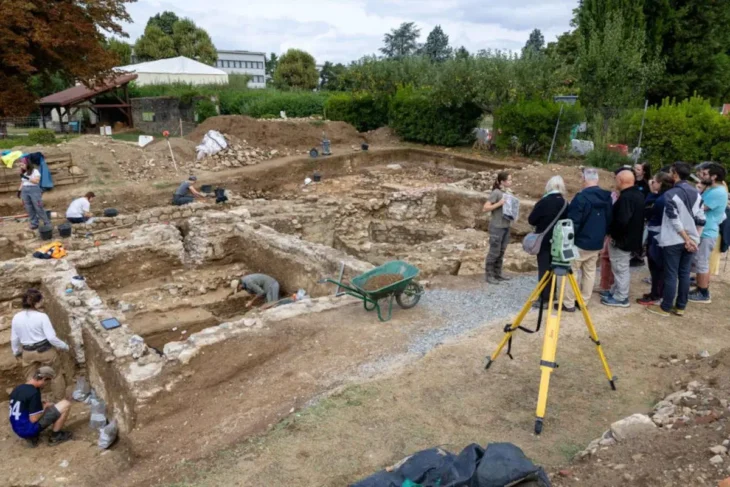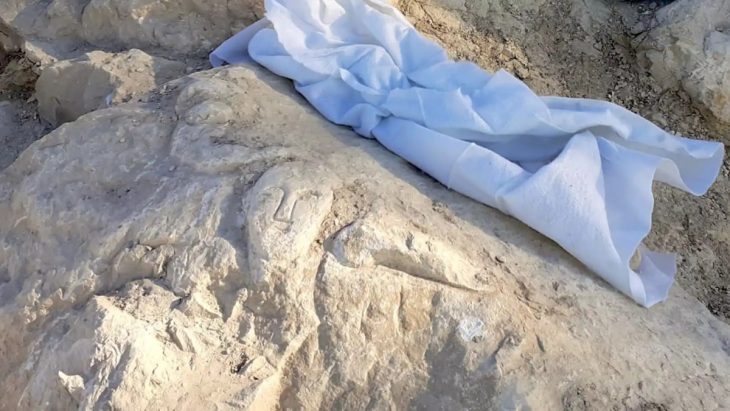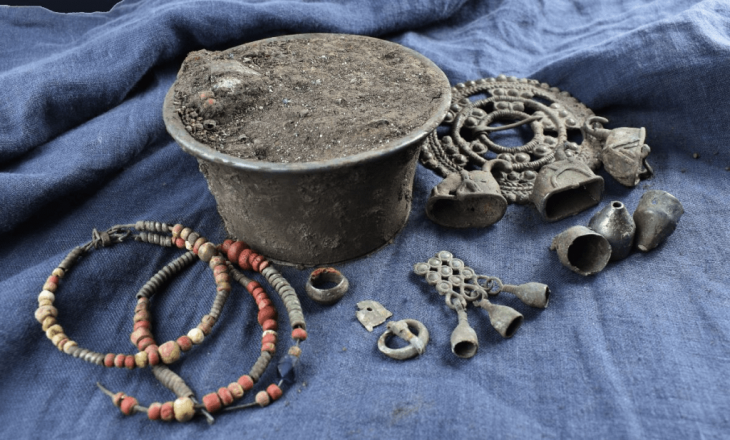The region of Saudi Arabia, where the mysterious neolithic structures called the “Gates of Hell” are located, has around 400 structures dating back to 9,000 years ago.
In addition to vast stretches of sand and gravel, the western half of the Arabian Peninsula is home to vast lava fields known as Haraat. One such field is the 14,000-square-kilometer Harrat Khaybar, which is located about 137 kilometers northeast of Al Madinah (Medina).
With plenty of evidence of past volcanic activity, this is one of Saudi Arabia’s largest volcanic fields. The volcanic field was formed by eruptions that occurred over five million years, with the most recent event recorded between 600 and 700 AD, according to NASA.
Archaeologists have discovered evidence that humans once lived here, among the lava flow, even though this was once one of the planet’s most inhospitable places.
When satellite imagery revealed hundreds of 9,000-year-old structures, experts were taken aback. The Stone Age walls, found built in volcanic fields, were named the Gates Of Hell because their short, thick connecting piles of brick resembled barred gates when viewed from above.
📣 Our WhatsApp channel is now LIVE! Stay up-to-date with the latest news and updates, just click here to follow us on WhatsApp and never miss a thing!!
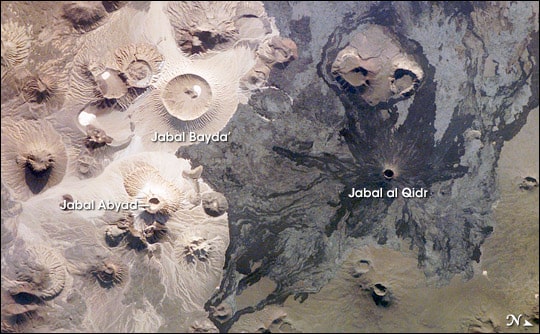
Along with the gate-like constructions, archaeologists also discovered a series of ancient walls that bore a resemblance to kite shapes and circular structures that have been called bullseyes and wheels, respectively.
So-called “desert kites” are largely understood to be stone fences that were probably used as animal traps.
According to the European Geosciences Union (EGU), it’s possible that these hunting traps weren’t designed to capture and kill animals, and rather they could represent a first attempt at domestication of animals.
The Sydney Morning Herald first reported in 1977 that “enigmatic circular stone formations, reminiscent of those found in Europe, are scattered throughout this arid country on hilltops and valleys remote from human habitation.”
However, it was only with the more recent development of satellite images that these formations have been identified as the remains of Neolithic communities.
Although the surrounding Bedouin tribes had long referred to the stone formations as “works of the old men,” David Kennedy of the University of Western Australia was the first to document them in the field of Western archaeology. Kennedy has identified approximately 400 stone walls.

Studies have included aerial photography, and have documented structures called ‘Mustatil’, Arabic for rectangle, in the Khaybar and AlUla regions.
Dr Hugh Thomas of the University of Western Australia has studied the area, in 2022, he told Arab News: “A lot of the archaeological focus in the region in the past has been on the Fertile Crescent, running through Jordan, Israel and up into Syria and beyond, and little archaeological attention has been paid to this early material of Saudi Arabia.
“The reality in that in the Neolithic period these areas were significantly greener, and there would have been sizeable populations of people and herds of animals moving across these landscapes.”
Archaeologists now consider the Khaybar area “unique” because of the large variety of structures and their extraordinary preservation by the arid local climate.
However, there is no clear indication of what these structures may have been used for. One theory is that they were ritual structures, but so far archaeologists have found it difficult to find a practical reason for their construction.
Cover Photo: NASA/CNES/Airbus, via Google Earth

